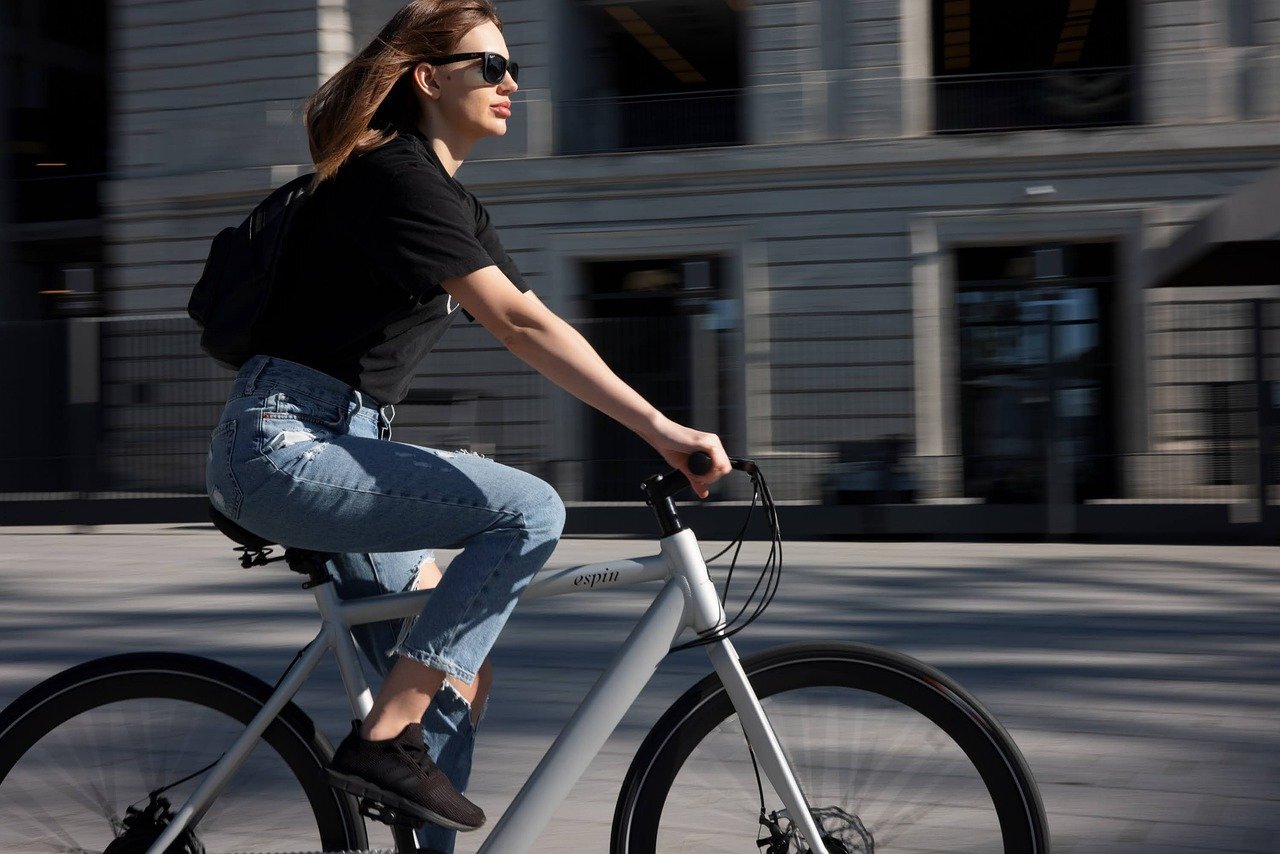GCI Blog
Top 5 Safety Tips For Riding a Bike
As well as the environmental, physical and long-term mental benefits of cycling, it’s important to remember that riding a bike is also just great fun! Whether you’re gliding through the city streets, racing down hills in the middle of nowhere, or simply drifting aimlessly around your local park, riding a bicycle can bring a simple sense of pleasure to almost anyone. However, to keep that smile on your face it’s important to avoid accidents! And although cycling is safer than it’s ever been, there are a number of common-sense precautions you can take to help avoid trouble. Here are our top five Safety Tips for Riding a Bike.
1. Wear a Helmet
Although debate will continue to rage over whether helmets should be compulsory or not, there’s no doubt that if you do take a tumble, a bike helmet will significantly reduce your chance of suffering a serious injury.
In fact, one Australian study found that bicycle helmets reduce the risk of serious head injury by almost 70%, face injury by 33% and fatal injury by 65%.
Everyone should wear one really. But if you’re someone who doesn’t routinely wear a helmet then perhaps you could consider wearing one when conditions are riskier, such as at night time, in poor weather or on busy roads.
2. Make sure you’re visible
Many cyclists seem blithely unaware of this, but you must make sure you’re visible to other road users in poor light!
This is imperative at night, but it’s also really important in the early morning and at dusk, when it’s not dark but the light is faded. Cyclists who don’t take positive steps to be seen are putting themselves and others in danger.
Whether you choose to wear bright or reflective clothing and bags, use bike lights or even add reflectors to your bicycle, you must alert vehicles, pedestrians and other cyclists to your presence.
A combination of all of the above is actually the best option. Reflective clothing and reflectors on your bike will only really work when the lights from vehicles hit them. Bright clothing dulls when it gets really dark. And bike lights can run out of batteries or you can forget to turn them on!
So, if you adopt several of these options at once, you’re increasing the chances that other road users will always be able to see you.
3. Cycle confidently but responsibly
Use bike lanes wherever they’re available. But when you’re sharing the road with other vehicles, it’s important to try to cycle confidently.

Stay away from the gutters where there might be potholes and slippery drain covers. If you’re too close to the kerb it may also encourage vehicles to try to overtake you when it’s dangerous. Taking a more central position on the road is usually safer.
Be alert to what’s going on around you and learn to anticipate what other road users are about to do. This means keeping one eye on the condition of the road ahead and another on the traffic. And never using earphones to listen to music or podcasts!
Communicate clearly what you’re going to do using hand signals where appropriate and make eye contact with other road users to be sure that they’ve noticed you.
Cycling decisively and confidently like this will help to keep you out of trouble with other vehicles on the road. However, it’s important that you cycle responsibly as well, to avoid accidents with pedestrians.
Always give way to pedestrians. Never jump traffic lights or weave through pedestrian filled traffic crossings. Keep an eye out for pedestrians that step out into the road unexpectedly. And try to cycle at a speed which allows you stop if they do.
4. Keep your bike in good condition
Just as you wouldn’t drive a car without an MOT, you really shouldn’t ride a bike unless you’re confident that it’s road worthy.
Keeping a bike in road worthy condition is actually pretty simple and a regular check over and tune up won’t take very long. The brakes and the wheel probably need the most attention here.
Check the brake pads to ensure they’re not too worn down and still grip the wheel rims firmly when the levers are squeezed. But also, that the pads don’t rub the wheel when the levers aren’t squeezed. Make sure the brake levers are responsive and tight.
Check that the tires have enough air and that they’re not getting worn down and losing their tread. If they do feel a little flat, make sure to give them some air, wait and then check for any slow punctures.
If your bike has gears make sure that you can move through them smoothly. And finally, a good wipe down with a rag is always welcome, especially after a ride in wet conditions when all sorts of grime and gunk gets thrown up onto your bike.
5. Keep your bike safe too!
Safety and security go hand in hand. And it’s no good getting safely to you destination, only to find your bike’s been stolen when you come to make the return journey!
Make sure you invest in a decent bike lock (not a cable lock). And learn how to use it to secure your bike properly.
A D lock usually offers the best balance between security, price and practicality. But chains and folding locks can work well too. Just make sure you choose a security level that is appropriate for your risk level.
Most stolen bikes are actually taken from the owner’s home (either from the front or back garden, garage or shed). So don’t forget to always lock your bike at home too, even if you always store it the garage or a bike shed.
Wrapping Up
There are so many great benefits to riding a bike and everyone who is able to should take advantage of the continuous improvements in cycling infrastructure and schemes like the Green Commute Initiative where they’re available.
For sure, it can be daunting getting on a bike again after a long time out of the saddle. But if you’re sensible and learn the tips to keep safe, you’ll soon be zipping around as confidently as you ever have!
This article was written and supplied by Carl Ellis at The Best Bike Lock https://thebestbikelock.com.
- 9th March 2022 – Last Updated 9th June 2022



